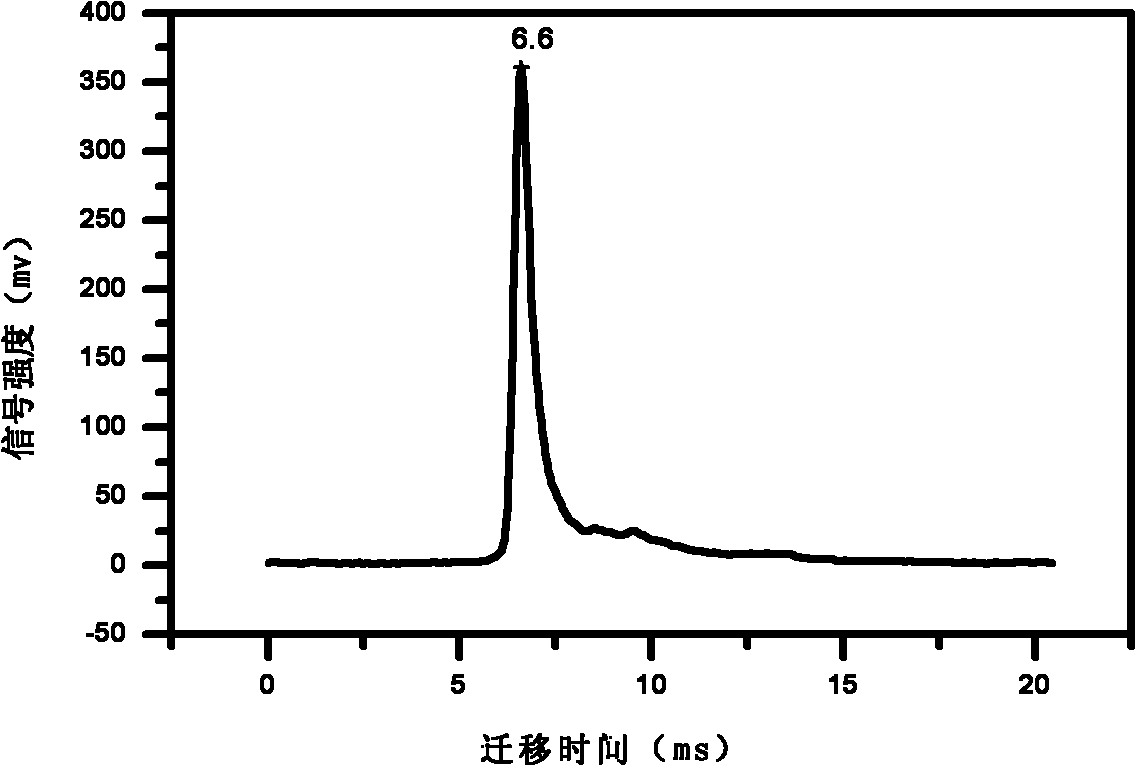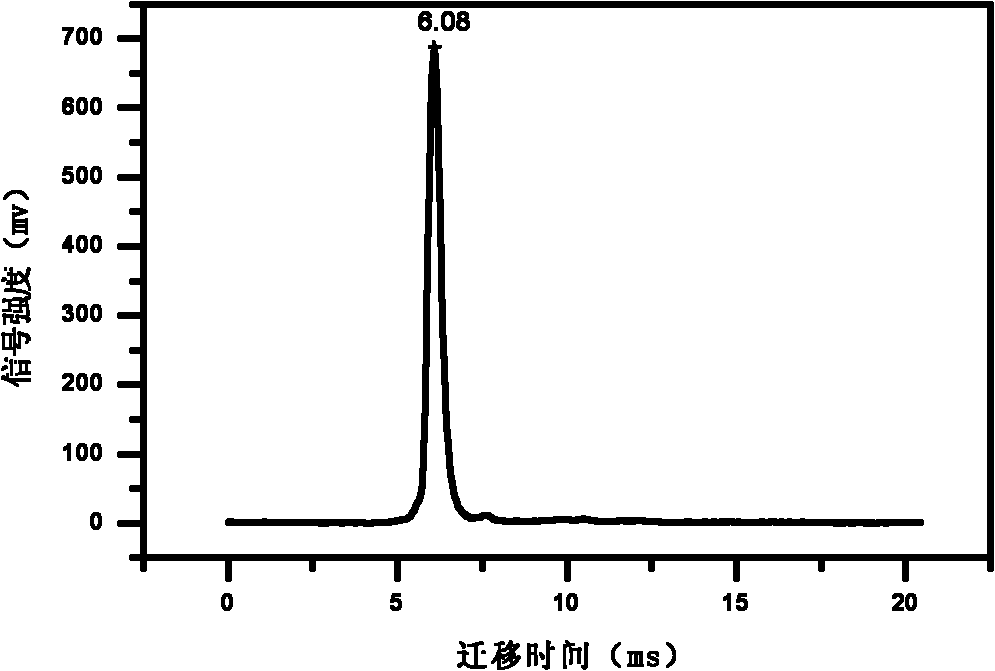External connection gas source and ion mobility spectrometry combination system
An ion mobility spectrometry and gas source technology, which is used in measurement devices, material analysis by electromagnetic means, instruments, etc., can solve the problems that the sample cannot be tested and the sensitivity does not meet the requirements, so as to achieve stable and reliable measurement results and increase detection. Sample variety, cost-effective effect
- Summary
- Abstract
- Description
- Claims
- Application Information
AI Technical Summary
Problems solved by technology
Method used
Image
Examples
Embodiment 1
[0024] Such as figure 1 , the air generator and ion mobility spectrometry system gas pipeline connection assembly 1 is the gas pipeline connection two-way; The inlet of the air pump is connected; the output gas pipeline of the air generator is generally a PTFE tube with an aperture of ¢3 or ¢4, and the gas inlet of the ion mobility spectrometer rapid detector is a PTFE tube of ¢4; the air generator output gas in this experiment The pipeline is a ¢3 PTFE tube, so connect the two-way 1 through the gas pipeline to switch to the ¢4 PTFE tube, and then connect the gas flow control valve 2 with an aperture of ¢4 to reduce the total gas flow to 2L / min To meet the detection conditions of the ion mobility spectrometer rapid detector, the carrier gas is 400mL / min, and the drift gas is 600mL / min.
Embodiment 2
[0026] The ion mobility spectrometer rapid detector operates under the condition that the relative humidity of the current laboratory is generally 20-60%, and can generally be maintained at a relative humidity of 0-20% through the instrument's own purification system. However, its relative humidity is greatly affected by external weather conditions, and a relative humidity of less than 2% can only be maintained for 2 to 5 days. At this time, the background signal (RIP) of the ion mobility spectrometer rapid detector is shown in Figure 2(a), and the signal strength is between 300 and 400mv; while the background signal (RIP) of the air generator and the ion mobility spectrometry combined system ion migration The spectrum is shown in Fig. 2(b). The signal enhancement is between 600 and 700mv, and the peak shape is optimized. As the relative humidity of the air decreases, the RIP signal migrates from 6.6ms to 6.08ms.
Embodiment 3
[0028] When the air humidity is high (greater than 2%), the detection signal of black powder (mainly measuring sulfur) just coincides with or is very close to RIP. As a result, the detection signal cannot be distinguished, and the alarm identification cannot be performed, but only the RIP signal is enhanced. However, the air source provided by the air generator ensures that the relative humidity of the air is less than 2%, so that the detection signal of black powder (sulfur) is separated from the RIP, and false alarms are reduced. The detection signal of 100ng sulfur is as follows image 3 shown. The ion mobility spectrum at 6.12ms is the RIP background signal, and the ion mobility spectrum at 6.32ms is the detection signal of black powder (sulfur).
PUM
 Login to View More
Login to View More Abstract
Description
Claims
Application Information
 Login to View More
Login to View More - R&D
- Intellectual Property
- Life Sciences
- Materials
- Tech Scout
- Unparalleled Data Quality
- Higher Quality Content
- 60% Fewer Hallucinations
Browse by: Latest US Patents, China's latest patents, Technical Efficacy Thesaurus, Application Domain, Technology Topic, Popular Technical Reports.
© 2025 PatSnap. All rights reserved.Legal|Privacy policy|Modern Slavery Act Transparency Statement|Sitemap|About US| Contact US: help@patsnap.com



